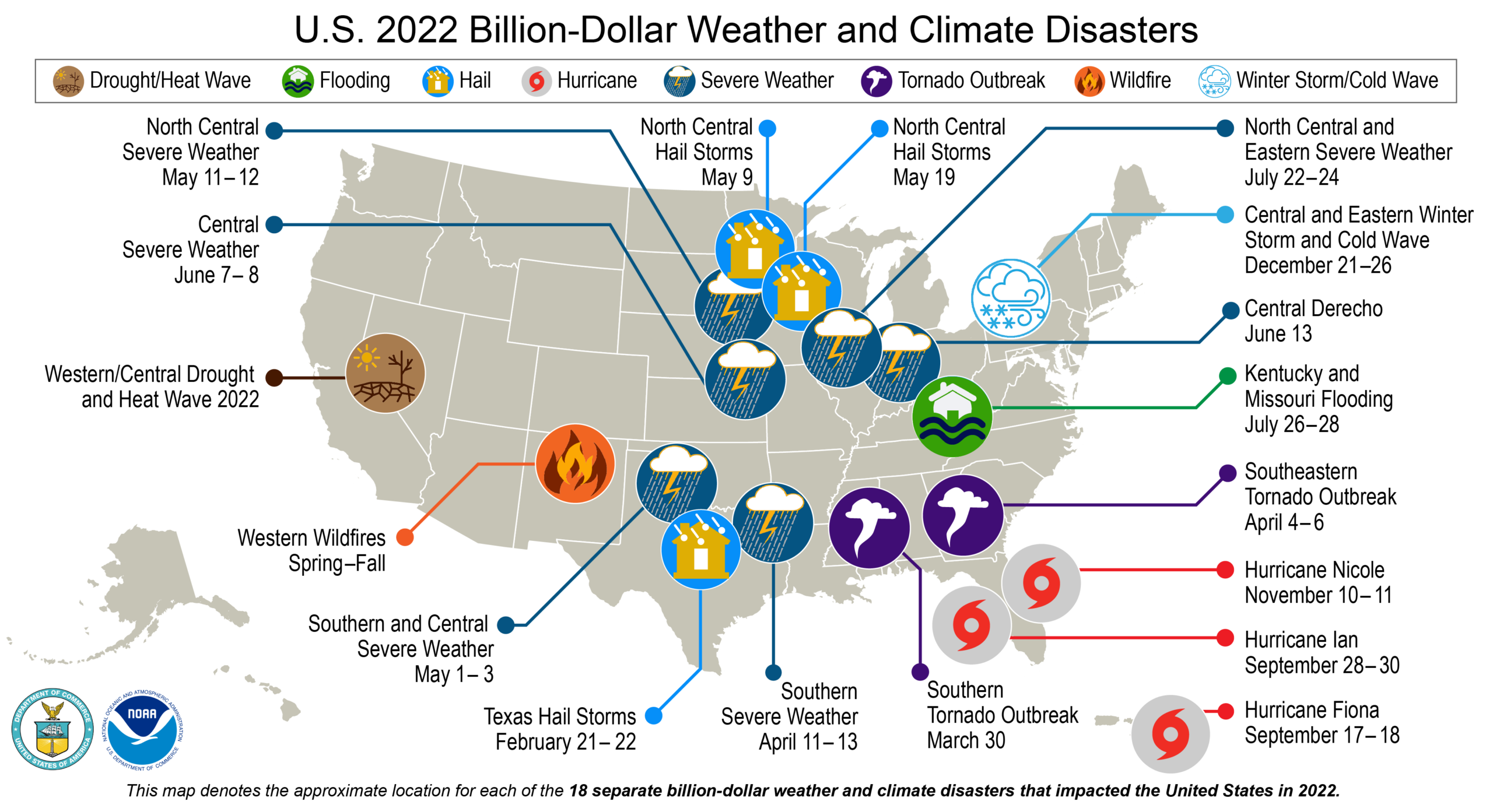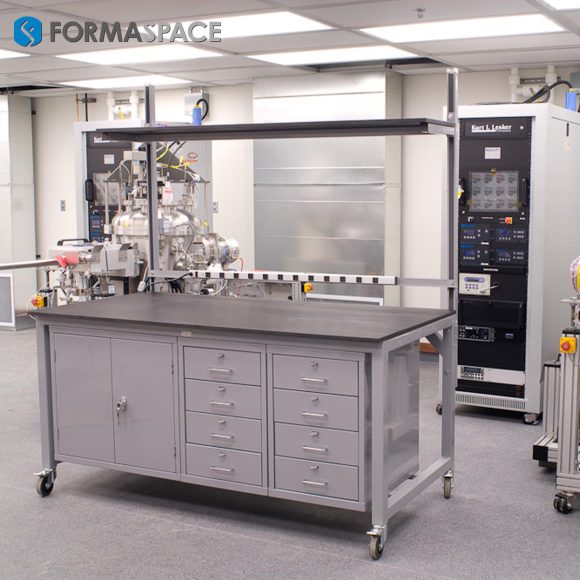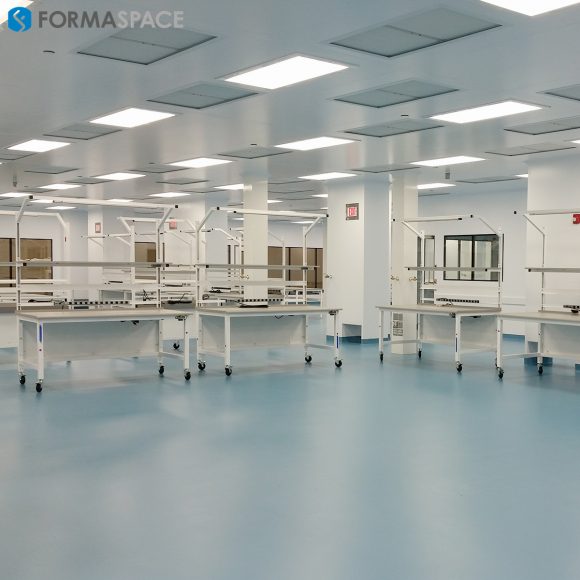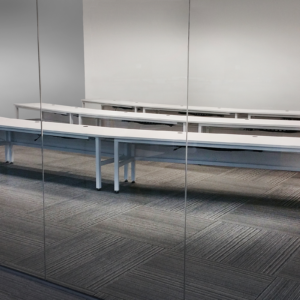The Summer of Our Discontent
The summer of 2023 will be remembered for intense heatwaves, flash floods, and tornadoes – and we’ve only reached the halfway point.
A heat dome has parked over Texas, while upstate New York and Vermont were devastated by torrential rains and flooding. Tornado damage is also on the rise, with nearly 1,000 tornados reported by the NWS as of June – including 23 tornado-related fatalities, a 10-year high.

At this rate, we appear to be on track to match or exceed the $1 billion in weather and climate disaster losses recorded in 2022.
Disasters Affecting Industrial Facilities and Factories, Large and Small, Often Don’t Get Widely Reported
US manufacturing facilities are hit with disasters more often than you would think –at least from reading the news.
The mainstream press has its hands full reporting on fires, floods, hurricanes, tornados, volcanic eruptions, as well infrastructure failures, such as electric power outages or bridge failures.
Understandably, these reports tend to focus on the health and safety of people first, often failing to mention the impact that disasters have on America’s factories and manufacturing plants, particularly those located in rural areas.

For example, this past March, a major gas line under a river in western Michigan failed, causing four large-scale local factories to shut down for days. While this was big news for production planners and factory workers, most local news reports didn’t cover this aspect of the story.
A tornado that tore through the Rocky Mount, North Carolina region this July is an exception.
It heavily damaged a Pfizer pharmaceutical factory, which is a key supplier of sterile injectable medical products used by hospitals. It was this potential supply chain issue that caught the attention of national news reporters due to the risk that taking this facility out of production will worsen our ongoing problem of domestic drug shortages.
Be Prepared with Pre-Event Safety Plan and Post-Disaster Recovery Plan
The Boy Scouts’ motto is “Be prepared.” Now might be a good time to review and possibly update the disaster recovery plan for your manufacturing operations.
What are the key elements of an effective Pre-Event Safety Plan and Post-Disaster Recovery Plan?
Let’s look at ten of the most important considerations.
1. Consider all the “What If” Disaster Scenarios
If you are located near the San Andreas fault in California, you might be focused on the danger of earthquakes, while managers overseeing facilities in coastal South Carolina might be most concerned about hurricanes. But don’t let confirmation bias cloud your judgment, e.g. consider ALL the possible scenarios that could affect your facility, not just the ones you think are most likely. Then consider the possible impact of multiple cascading events: for example, a wildfire that threatens your factory but also knocks out the cell phone and electric service. How will you respond? Document these different scenarios and how you could best respond.
2. Situational Awareness and Environmental Monitoring
Today we have the advantage of very advanced forecasting tools for weather and other environmental disasters, from sophisticated ground radar to overhead satellites to computer simulations to earthquake sensor networks. (Soon, we might even be able to predict earthquakes an hour ahead of time.)
Ask yourself: are you taking full advantage of what is available, or do you need to up your game and subscribe to multiple warning systems? And, importantly, who in the organization is responsible for monitoring alerts and issuing appropriate warnings when danger threatens?
3. Preventing Secondary Industrial Disasters, known as Natech

The aviation industry often describes accidents through the analogy of Swiss cheese.
Accidents often occur due to more than one factor – leading to many narrow escapes – but when the holes in the Swiss cheese line up – disaster results.
Unfortunately, there has been a growing number of natural disasters in recent times that have resulted in devastating secondary industrial disasters; this phenomenon goes by the acronym Natech, which stands for ‘Natural Hazards Triggering Technological Disasters.’
The giant Japanese earthquake of March 2011 is a prime example; the subsequent tsunami overwhelmed the Fukushima Daiichi nuclear power plant, creating an unprecedented secondary disaster of highly radioactive water breaching the containment structure and quickly reaching the open ocean below.
Take the time to consider unexpected sequences of events after the initial disaster. What can steps can you take to prevent secondary disasters?
4. What about Your Supply Chain Partners? Are they Prepared?
Broaden the scope of your safety and disaster recovery planning.
How well prepared are your critical partners, especially those key suppliers upon which your production is highly dependent? You can take this exercise further by asking about the preparedness status of their suppliers as well.
Also, consider the locations of your suppliers – if they are in close geographical proximity, could they also be affected by the same potential future disaster as you?
5. Investments in Business Continuity Planning and Second Sourcing
Most small and medium-sized factories and manufacturing plants don’t have the luxury of creating duplicate facilities for the “just in case” disaster scenario.
But you should still look at the potential consequences of one of your key facilities being knocked for days, weeks, or months. What would you do?
It would take time to establish a second source after a disaster, so it may be prudent to spend some money upfront to maintain “warm connections” with a secondary supplier, e.g. purchase a limited amount of key product now – before a disaster occurs. This would help speed up the ramp-up time needed for a second source if required.
Investigate and plan for other business continuity contingencies as well. If there is a disaster, how will you access your records, documentation, inventory records, or payroll? Do you have a secondary financial institution in place to switch over to if necessary?
Business Continuity insurance is another option to consider if it is available. But be advised that many policies have limited payouts for natural disasters. If coverage is not excluded entirely (e.g. due to “an act of God”), there may be limitations, such as insurance riders that only cover damages that occur 72 hours after the initial incident. (This is a problem given that the majority of damage in environmental disasters generally occurs during the first 72 hours.)

6. Rapid Disaster Response – Safe Equipment Shutdown, Personnel Safety, and Damage Mitigation
When tornadic activity is threatening a school, the administrators often face a difficult choice: if there is no immediate threat, is it safer to keep the students in school or send them home?
Factory managers face similar choices, with the added complication that many manufacturing facilities, such as refineries, chemical plants, and metal foundries, have ongoing 24×7 processes that need to be shut down safely (ideally in an orderly fashion) to prevent damage to personnel, equipment, and even in some cases the surrounding community. Many industrial shutdowns are not instantaneous and can take many minutes or hours to execute.
Making the decision to perform a shutdown is difficult, but managers need to know (based on your planning documents and good training) that they have your support to shut down when it’s the safer choice.
If disaster threatens, and there is no time for employees to go home, what is the plan for keeping them safe on the job site? For example, is there a strong reinforced internal area to shelter during a tornado? What about earthquakes? Where should employees evacuate (if possible) away from dangerous areas, such as the aisles between tall racks in the warehouse?
Do you have enough first aid supplies to render aid? What about enduring extended periods without electrical power or running water?
7. Document Your Safety Plan, then Conduct Active Drills and Test Your Communication Protocols
Maintain and update a comprehensive safety plan that documents the steps for responding to different disaster scenarios.
After you document the detailed steps for responding to a disaster, test the effectiveness of your plans by conducting regular and surprise disaster scenario simulations to find out what works and what doesn’t.
Of course, disasters are oblivious to your plans, but if you create an effective chain of command with good communication protocols and empower your team leaders to execute the plan using their best judgment, you will be better prepared.
After the simulation exercise, conduct a lessons-learned debrief. Hopefully, you will discover important issues that were overlooked, from not having walkie-talkies to communicate when the phone service goes down to a lack of hand tools to shut off equipment and gas lines or to start up generators.
Better to make these discoveries now than during the heat of an emergency.

8. Post-Disaster Clean-Up and Resumption of Operations
The Brits, Canadians, and Ozzies have a useful expression – in the face of disaster, you need to try your best “to save the furniture.”
Think of what a post-disaster clean-up would look like.
For example, if the roof is torn off during a storm, do you have enough tarps on hand to protect equipment from the elements?
Do you have a working crane on-site to repair the roof?
What about securing the facility? Do you have temporary fencing that can keep people out of danger – or prevent theft?
How will you be able to communicate with a skeleton crew of employees to help prevent further damage to facility assets?
Do you have offsite records to document equipment or material losses for insurance claims?
How can you quickly repair or replace important equipment that is damaged?
9. Special Circumstances: Cleanrooms and Sterile Operations
Some production facilities are at an increased risk when it comes to environmental damage.
These include microchip plants, drug manufacturing facilities, and automotive external paint lines.
What do they have in common? They are all highly dependent on maintaining clean or sterile operations.
This point was underscored by Dr. Albert Boula, Chairman and CEO of Pfizer, who spoke at a press conference after the Rocky Mount, NC area, tornado hit the Pfizer production facility.
Boula noted that because the facility has to maintain a sterile operations cleanroom, it would take several weeks (at a minimum) to restart operations.

10. Caring for Employees, Public Communications, and Community Support
What kind of support will you offer employees after a disaster?
Will you be able to furlough them with or without pay if there is an extensive shutdown? What about employees who now lack housing due to a disaster?
Your employees are not the only ones who will want to know.
After a disaster, you may need to have a designated public affairs person available to speak to the press, answer questions from the public about any dangers caused by the disaster, and respond to pointed inquiries about how you will take care of your employees – and the affected surrounding community.
Designated personnel may also need to communicate with local, state, or federal law enforcement, as well as representatives from government agencies, from FEMA to the EPA, depending on the circumstances.
If the disaster results in environmental damage, you may need to engage counsel to represent your company and protect your interests, as well as pursue any available FEMA mitigation funds that might be unlocked by a major disaster declaration.
Formaspace is Your Manufacturing Partner
If you can imagine it, we can build it, here at our factory headquarters in Austin, Texas.
Contact your Formaspace Design Consultant today to find out how we can work together to make your manufacturing, material handling, and warehousing operations safer and more productive.












